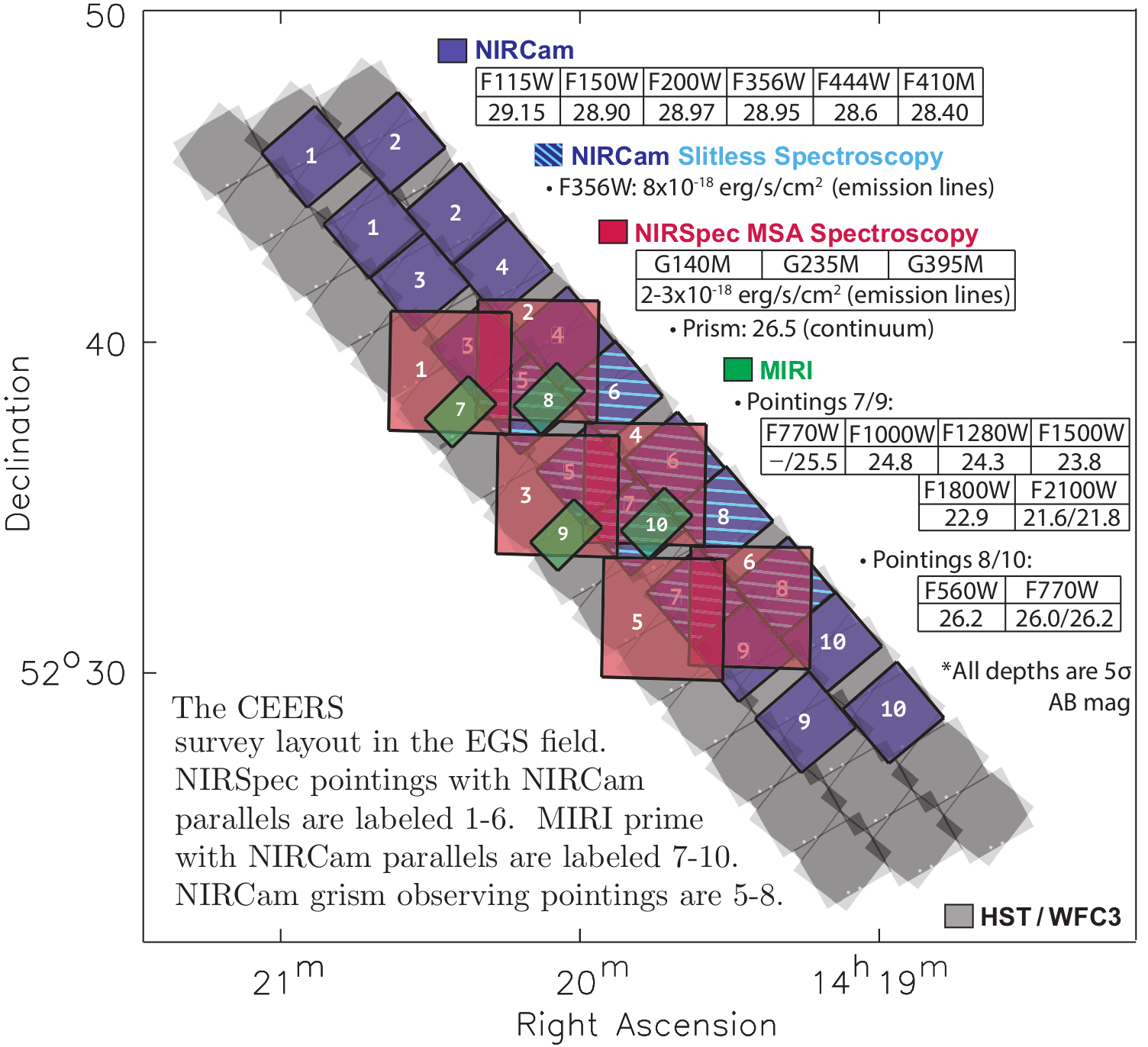

CEERS Project Goals
CEERS will demonstrate, test, and validate efficient extragalactic surveys with coordinated, overlapping parallel observations with the JWST instrument suite. The observations, tests, and data products will pave the way for Cycle 2 observations.
CEERS will also address key JWST science goals, including:
- constraining the abundance and physical nature of galaxies at z~9-13;
- constraining the physical conditions of star-formation and black hole growth via line diagnostics of galaxies at z>3;
- quantifying the first bulge and disk structures at z>3; and
- characterizing galaxy mid-IR emission to study dust-obscured star-formation and supermassive black hole growth at z~1-3
CEERS will therefore enable immediate community science exploring both extragalactic JWST science drivers:
Observing Modes


CEERS will obtain imaging and spectroscopy of the EGS HST legacy field field with six parallel JWST instrument modes.
- NIRCam imaging in 10 pointings, pairing the SWC and LWF filters
- NIRCam grism observations in 4 pointings
- NIRSpec R~1000 in 6 pointings
- NIRSpec R~100 in 4 pointings
- MIRI imaging in 4 pointings
Community Products
The CEERS team will provide calibrated images and derived data products to the community in three planned releases. The planned data releases will include:
- Mock raw images and spectra for JWST sources
- Improved HST EGS mosaics and photometry catalogs
- NIRCam and MIRI image mosaics
- Reduced 2D and 1D NIRSpec and NIRCam grism spectra
- Spectroscopic catalogs with line fluxes, spectroscopic redshifts, and emission line diagnostics
- PSF-Matched photometry catalogs including complementary ground-based imaging and deblended MIRI photometry
- Value-added catalogs with photometric redshifts, stellar masses and SFRs, and morphological measurements
- A sample of z>9 candidates for community follow-up
All data products will be submitted to MAST and available here, with detailed links to all ancillary data. Our survey design, analysis methods, and data products will be extensively documented, allowing reproducibility by the community.